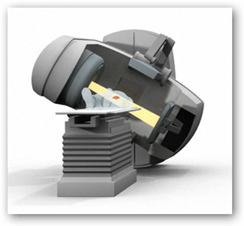As more reports on radiation overdose make it to the news, this appears to be an issue that needs some software attention, not only with the manufacturers but  also a tracking system as a back up. If it is missed at the hospital or facility level, a new data base complete with algorithmic formulas to create additional alerts could be available. Read the post at the link below and you may have a better understanding of how things can go wrong, and it’s all about the software design and user interfaces. Programmers sometimes forget that the tech is catering to the patient, which they should be, and software design may not always be aware of all levels and where additional safeguards need to be added. When I wrote code I could never anticipate every need of an EMR used in a doctors office, that’s why you need collaboration and as a programmer, learn to eat your own dog food and realize it’s all about the user interface and not your creation.
also a tracking system as a back up. If it is missed at the hospital or facility level, a new data base complete with algorithmic formulas to create additional alerts could be available. Read the post at the link below and you may have a better understanding of how things can go wrong, and it’s all about the software design and user interfaces. Programmers sometimes forget that the tech is catering to the patient, which they should be, and software design may not always be aware of all levels and where additional safeguards need to be added. When I wrote code I could never anticipate every need of an EMR used in a doctors office, that’s why you need collaboration and as a programmer, learn to eat your own dog food and realize it’s all about the user interface and not your creation.
Radiation Procedures Gone Sour – Software and Other Related Failures Lead to Death and Lifetime Illnesses
I don’t think we will have any issues here with the manufacturers of the machines either, as they too want to know as it is not their business to put products on the market that endanger patients.
CT Brain Scans At Cedars-Sinai investigated – Dosage Settings Too High
The double bonus here is the availability of patients to also store their treatment results, etc. in a personal health record. Think of this, you get referred to another facility and are able to bring your imaging information with you, pretty cool stuff in my book. This just gives you one more good reason to start a PHR.
You can count on me “the healthcare heathen” as I am known in some circles to keep you updated. I say this in jest as relates to the link below, which is basically a good synapses of how individuals like myself are sometimes viewed. I can’t tell you the number of times I have been told “don’t talk about items like this, people won’t like you”, but I brush that off and just keep going as there are many who want to learn and keep up to date on knowledge today. A few years ago friends really used to get argumentive about information offered that was in a learning direction, and that is largely due to “tech denial” that runs a muck in the US.
Why “Geek” is Chic – Learning to Become Less Naive and Less Ignorant
Back on track I think this is a great idea and hospitals will be able to share imaging information too, less repeated testing for patients too and we will learn a lot more about radiation safety through intelligent use of software and the continued development of informatics. BD
CHICAGO (Reuters) - The National Institutes of Health plans to require that all makers of CT and other radiation-producing scanners used at NIH clinics have software that tracks a patient's radiation dose and logs it into an electronic medical record.
The new policy arises from patient concerns about studies suggesting that repeated exposure to radiation from diagnostic tests may raise their risk of cancer, said Dr. David Bluemke, director of radiology and imaging sciences at the NIH Clinical Center. The policy was announced on Monday in the Journal of the American College of Radiology.
A CT scan, also known as computed tomography, gives doctors a view inside the body, often eliminating the need for exploratory surgery. But CT scans involve a much higher radiation dose than conventional X-rays. A chest CT scan exposes the patient to more than 100 times the radiation dose of a typical chest X-ray.
NIH policy urges CT makers to track radiation dose | Reuters



0 comments :
Post a Comment